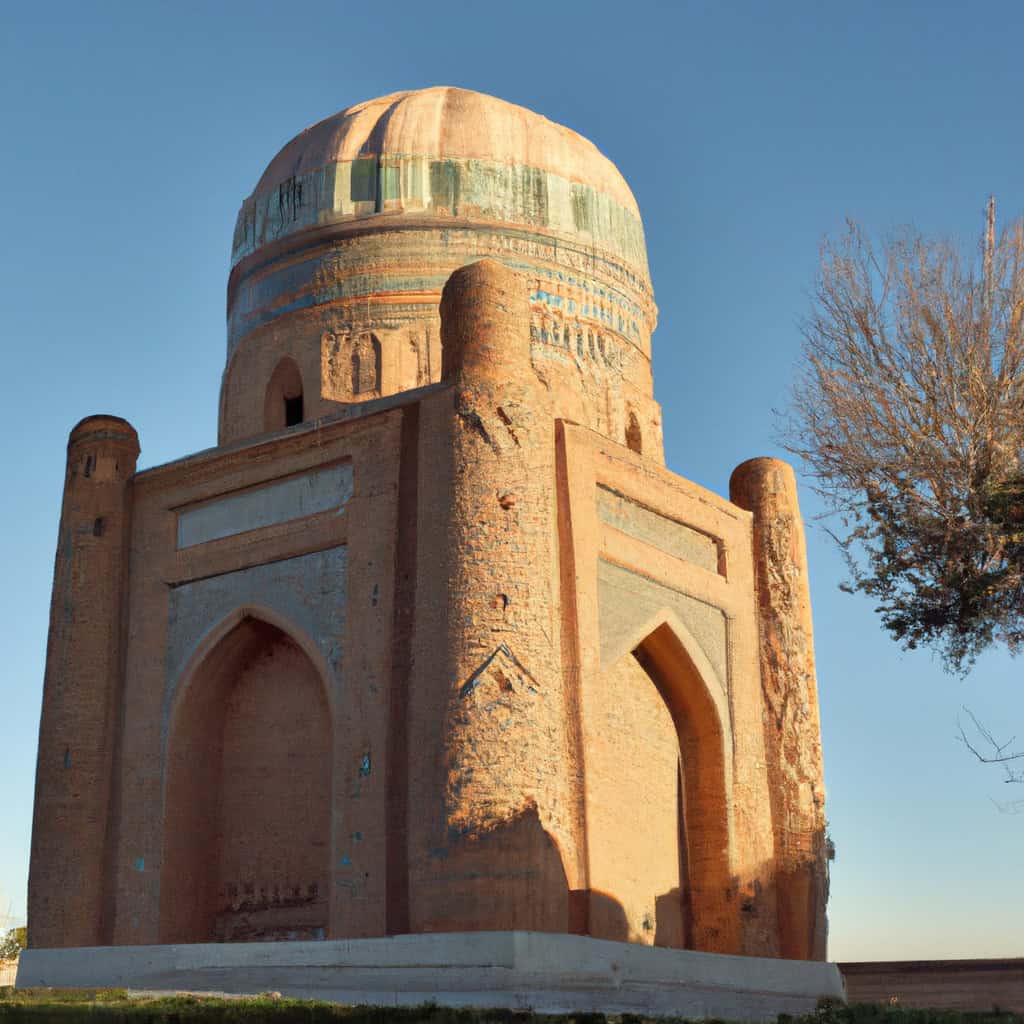Rabia Balkhi Tomb in Balkh City, is one of many fascinating sites that both foreign visitors and local tourists can explore while they visit Afghanistan and exploring Balkh Province. Set in the heart of the ancient town of Balkh, Rabia Balkhi Tomb is a site steeped in history and legend. This red-brick mausoleum is a testament to the rich heritage of Afghanistan, dating back to the 9th century. Dedicated to Rabia Balkhi, one of the first women poets in the world, the tomb embodies the resilience and spirit of Afghan culture.
The site stands not only as an important historical location but also as a symbol of transcending female voices throughout history. Its presence echoes the vibrant past of Balkh, once known as Bactria during ancient times, and beckons to those interested in delving into the pages of Afghan history that live on in its walls.
Rabia Balkhi Tomb Most Important Events
- Construction of the Tomb: An impactful moment in the history of the Rabia Balkhi Tomb is its initial construction. Despite not having a precise date, it’s believed to have been built in the 9th century, to honor and commemorate the renowned Persian poetess, Rabia Balkhi.
- The Golden Age of Poetry: The era that followed after Rabia Balkhi’s death, especially the 10th and 11th centuries, was a period of immense literary growth and progress in the region, solidifying the impact of Rabia Balkhi on the literary scene.
- The Modern Recognition: In recent decades, there has been an increased acknowledgement of Rabia Balkhi’s legacy, both nationally and internationally, leading to a surge in visitor interest to the tomb and its surrounding city.
History of Rabia Balkhi Tomb in Balkh City
The rich history of Rabia Balkhi Tomb is deeply intertwined with the narrative of the city of Balkh itself. A once majestic and learned city, Balkh fell into times of great decline with invasions and wars. Yet, the Tomb of Rabia Balkhi has, time and again, managed to endure, maintaining its spiritual and historical significance.
Historically, Balkh was a prominent city of the Persian Empire and key to the Silk Road trade route. It thus held incredible cultural and literary significance. Rabia Balkhi was a literary gem from this era, and her poetry has left an indelible mark on the heritage of the region. The tomb built in her honor reflects the cultural reverence bestowed upon the poetess.
In the past few decades, the tomb has observed a resurgence in tourism as Afghanistan works toward rebuilding and reviving their historical sites. Today, the tomb stands as a powerful symbol of resilience – representing, in essence, the spirit of Afghan people and their rich, albeit tumultuous, history.
Why It’s Important to Afghan History
The Tomb of Rabia Balkhi represents more than just a physical monument. It’s a beacon of Afghanistan’s literary heritage and the pioneering role of women in this sphere. The fact that a woman from the 9th century, in a deeply patriarchal society, is still remembered and revered, speaks volumes about the progression and mindset of the period.
Moreover, the tomb marks the impact of the Persian Empire and its literary influence that it had over the region. It serves to remind the world of a time when Balkh was a thriving hub of education and enlightenment.
Why to Visit Rabia Balkhi Tomb
Visiting the Rabia Balkhi Tomb is like stepping into a time capsule of Afghan culture and history. The architectural beauty of the tomb, made of distinctly red brickwork, takes you back to the traditional building practices of historical Afghan structures. The surroundings add to this atmosphere, with the city displaying an array of antiquities and landmarks.
Further, the tomb offers an ethereal experience of tranquillity and reverence. The mausoleum’s interiors, adorned with Persian calligraphy, evoke a sense of admiration and provide insight into the legacy of Rabia Balkhi.
- The mesmerizing red brickwork and intricate designs
- The beautiful calligraphy inside the mausoleum
- The tranquil atmosphere that surrounds the tomb
- The historical significance encompassed within its walls
- The awe-striking landscape of Balkh City
Balkh city offers easy transport options to the Tomb and is accessible throughout the year. However, the enthusiast’s best time to visit is during spring or early autumn when the weather is mild.
Cultural & Tourist Significance
In the world of travel and tourism, finding destinations like the Tomb of Rabia Balkhi that are rich in cultural experiences and instilled with historical narratives is what adventurers and culture seekers long for. Balkh City, once called the ‘Mother of Cities’ by Arabs, along with Rabia Balkhi Tomb, offer a unique exploration of Afghanistan’s deep-rooted history and traditions.
Visitors to the tomb will be submerged in the tales and poems of Rabia Balkhi, providing a distinct cultural connection. The legacy of the tomb and its capacity to hold a millennium of history makes it an enriching experience for all types of tourists.
The tomb also offers an authentic slice of Afghan life. By engaging with locals, tourists can explore narratives about Rabia Balkhi, the folklore binding her, and her poetry’s impact, adding layers to the touristic experience.
Interesting Facts
One lesser-known fact about Rabia Balkhi is that historians are not entirely sure about her birth and death years. However, they all agree that she lived in the 9th century and that her brother had her killed due to her love for a slave.
A local legend suggests that Rabia Balkhi wrote her final poem in her own blood as she lay dying, making her an epitome of tragic love in Persian literature.
The spirit and voice of Rabia Balkhi continue to live on through her tomb in Balkh. Her tomb is a place of pilgrimage for poets, scholars and lovers of literature from across the globe. It’s not just a tomb, but a tribute to the rich cultural tapestry that makes Afghanistan unique.

